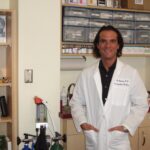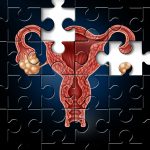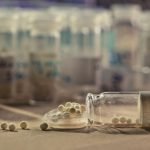Platelet Rich Plasma for Treating Chronic Pain
Harry Adelson, ND
Regenerative injection therapy (RIT), also known as prolotherapy, has been practiced in the U.S. for more than 50 years. In simplest terms, RIT is the injection of a solution containing natural substances and local anesthetics directly into damaged connective tissues, with the purpose of triggering a mild and controlled inflammatory response to allow the body’s natural healing mechanisms to take place. In other words, RIT “tricks” the body into thinking that there has been a new injury in the damaged connective tissue. Subsequent inherent tissue healing occurs in a three-phase process: hemorrhage with inflammation, matrix and cellular proliferation and, finally, remodeling and maturation. A major constituent in this physiologic event is platelet aggregation at the site.
Platelet Rich Plasma
A recent addition to the practice of RIT is the injection of autologous platelet concentrate, also known as platelet rich plasma (PRP).
Platelet aggregation occurs with any type of traumatic injury. Upon aggregation, platelets release cytokins, which allow for matrix deposition and collagen production. Therapeutic PRP has been used for years in surgical centers worldwide to improve the success of bone and tissue grafting, as well as by cosmetic surgeons for decreasing healing time and the risk of infection after surgery. Only in the last few years have doctors and surgeons been experimenting with injecting PRP for the treatment of musculoskeletal pain. Tennis elbow, plantar fasciitis, Achilles tendonitis/tendonosis, rotator cuff tears, meniscal tears, chronic low back and neck pain as well as OA are currently being treated with the injection of PRP, with the goal of regenerating degenerated connective tissue. The injection of PRP appears to be a logical progression of the practice of RIT. That is, if the purpose of RIT is to cause regeneration of tissue by triggering matrix deposition and collagen production (largely caused by platelet aggregation) directly at the site of nociogenisis, then injecting PRP “skips a step” in this mechanism of action.
Typical PRP Treatment
During a PRP treatment, 20 or 60mL of the patient’s blood is drawn and placed into a specially manufactured collection kit. Using the person’s own blood eliminates the risk of transmission of blood-borne disease. This kit is placed in a centrifuge for 15 minutes, and the platelets and plasma are separated from the red and white blood cells. Two-thirds of the plasma is discarded, and the remaining plasma is mixed with the platelets, rendering 5 or 10mL of PRP. The area to be treated is cleaned and injected with a local anesthetic to decrease the pain of the PRP injection. After allowing enough time for the anesthetic to take effect, the PRP is injected.
People generally report two days of moderate to severe soreness; then, typically, pain relief occurs within the first week and continues to improve over a period of months. To date, my experience is that one PRP treatment is the therapeutic equivalent of three or four RIT treatments using dextrose.
Case Study
Michelle is a 42-year-old female who developed low back pain 10 years ago after she fell down a flight of stairs. At that time she sought chiropractic care, and her family doctor prescribed opioid narcotic medications. The pain worsened progressively, and two years ago she consulted with an orthopedic surgeon, who performed an MR. He gave her the diagnoses of degenerative disk disease, disc protrusion at L4/L5 and L5/S1, and OA of the corresponding facet joints. He recommended spinal fusion at those levels. She declined surgery but agreed to a steroid epidural. This helped for three months, but then her pain level resumed as it was prior to the intervention. The surgeon performed a second epidural, which provided one month of relief. A third epidural produced no relief, at which time she presented to my clinic. She described aching, throbbing pain along her lumbar area, which was worse with any type of movement, prolonged sitting or prolonged standing. On visual analog scale, she reported a baseline pain level of 6, but could experience 10 at its worst. She was taking Ultram ER 200mg once per day, 800mg of ibuprofen three times per day and Loratab 10/500 for breakthrough pain. She reported that this pain affected every aspect of her life; she was unable to perform any kind of physical activity without pain, and this deeply affected her relationship with her young children as well as her job teaching developmentally delayed children. Her pain was damaging her marriage, due to her decreased sex drive, overall irritability and depression. All orthopedic exams performed were negative, except pain elicited by palpation over the facet joints at L4/L5 and L5/S1.
I concurred with the diagnoses of degenerative disk disease and facet OA. We discussed treatment options, and decided to pursue paravertebral injections with PRP. After harvesting PRP, cleaning the skin and anesthetizing the areas to be treated, I performed paravertebral injections at the level of the periosteum with PRP bilaterally at the levels of L4/5 and L5/S1 (3cc of PRP at each site, 12cc total) and instructed her to return in one month.
At the follow-up, she reported that after our treatment she had been pain free for 10 days, then the pain returned slightly, and four days before the follow-up visit her pain returned to baseline when she lifted a child in a twisting manner. We repeated the treatment.
At our next visit one month later, she reported 85% improvement in her pain, as well as dramatic improvement in her activities of daily living and overall quality of life. We repeated the treatment.
One day before our scheduled visit one month later, she canceled her appointment because she reported that she was completely pain free. She told me on the phone that she was having emotional difficulty adjusting to her life without pain, as it had been such a major factor of every aspect of her social dynamics.
Case Study 2
Judy is a 56-year-old, healthy female who presented to my clinic with complaints of right knee pain. Onset occurred two years earlier during a group tour to South America, where she climbed and descended ancient pyramids daily for 10 days. Her pain gradually increased, and four months prior to her initial visit at my clinic, she consulted an orthopedic surgeon. He took x-rays, diagnosed her with advanced OA and prescribed a total knee replacement. He then performed a corticosteroid injection, which she reported relieved the pain for one month.
She presented to me complaining of pain and “popping” in her medial right knee, and indicated her pain to be “7” on the visual analog scale. Pain was worse going down stairs. She was taking 800mg ibuprofen three times per day and Loratab 5/500 three to four times per day. The pain woke her up three to four times per night and she was unable to lie prone in bed ,as that would elicit knee pain. It was difficult to use the stairs in her house, perform housework, garden, walk with her husband or pick up her grandchildren. Exam of her right knee revealed a stable ACL, and all other exams were normal. However, I was able to elicit pain upon palpation of her right medial knee.
After discussing treatment options, we elected to inject her knee with PRP. After harvesting PRP and prepping the area, I first performed an intra-articular injection of 3cc of lidocaine 2% into her right knee, followed two minutes later by 5cc of PRP. I instructed her to return in one month.
At the followup, she reported 50% improvement. Her pain was no longer constant, and no longer woke her up at night. She now only experienced pain while going down stairs; however, this pain was markedly less than before. We repeated the treatment.
At the next one-month followup, she reported further improvement in the pain level as well as her range of motion. Now she only felt a slight “sting” going down stairs that she would not describe as pain. We repeated the treatment.
One month later, she reported complete resolution of her pain, and requested treatment of her bilateral first carpal/metacarpal joints.

Harry Adelson, ND received his naturopathic degree from NCNM. He is founding president of the Naturopathic Academy of Therapeutic Injection, and practices prolotherapy and mesotherapy exclusively. He lectured on the use of PRP with prolotherapy/regenerative injection therapy at the Taiwanese chapter of the Chinese Association for the Study of Pain in March. He also lectured on prolotherapy and mesotherapy at the Chinese Society of Anesthesiology in China in 2006. He is the only American doctor to have lectured at and taught hands-on practicum groups with the French Society of Mesotherapy. He has lectured on and demonstrated prolotherapy and mesotherapy at the 2004 and 2005 meetings of the American Academy of Pain Management, and has authored a chapter on these subjects in the seventh edition of the textbook Pain Management, a Guide for Clinicians. Dr. Adelson is a diplomate of the American Academy of Pain Management and practices in Salt Lake City, Utah.









